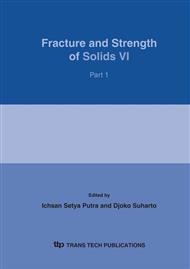p.1331
p.1337
p.1343
p.1349
p.1355
p.1361
p.1367
p.1373
p.1379
Experimental Investigation on the Structural Behavior of Shear Connectors Used in the FRP and Concrete Bridge Deck System
Abstract:
Feasibility study on the use of newly developed FRP and concrete composite bridge deck system is conducted. To lengthen the service life of bridge deck, the steel-free bridge deck system is developed. In this deck system, shear connectors between FRP module and concrete are utilized and structural behavior of shear connectors is investigated experimentally. The result of an investigation reveals that the system is promising.
Info:
Periodical:
Pages:
1355-1360
Citation:
Online since:
March 2006
Authors:
Price:
Сopyright:
© 2006 Trans Tech Publications Ltd. All Rights Reserved
Share:
Citation:


